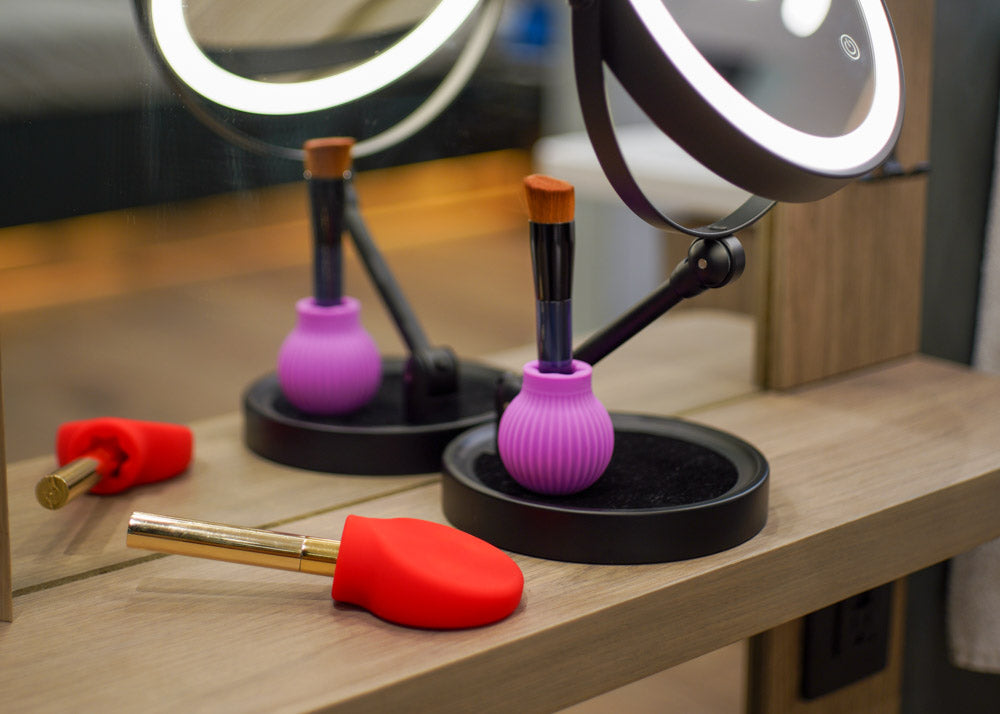
Taking Action on Accessibility Needs
When friends and family gather, it’s a chance to reconnect—and sometimes, to notice when a loved one may need extra support at home. At Capella Design, we’ve been there. That’s why we’re collaborating with designers, occupational therapists, and caregivers to share actionable ways to support your loved ones.
Check out our first post in the series, recognizing signs of accessibility needs.
Breaking the Ice with Care and Empathy

Starting a conversation about accessibility needs can feel scary. It’s a sensitive topic that touches on independence and often deeply held emotions. Many people may afraid or embarrassed to discuss these challenges, fearing judgment or a loss of control over their space and decisions. No one will make a change unless they feel ready.
But when approached with empathy and care, these conversations can open the door to meaningful change and create a shared understanding of how to best support one another. By taking the time to thoughtfully open the dialogue, you show your loved ones that your goal isn’t to pressure them, but to support them in a way that feels right for their needs.
For many, the idea of adapting their home to address accessibility needs can feel like a loss of independence. But the goal isn’t to take something away—it’s to enhance safety, comfort, and confidence in their daily life. By starting the conversation, you’re not only addressing practical concerns but also showing your loved ones that you value their well-being and want to help them maintain their sense of self in the space they cherish.
Your Steps to Prepare

Before diving into the conversation, it’s important to set the right tone. Here are four steps to help you approach the topic thoughtfully:
Choose the Right Time and Place
Timing and location can make all the difference in creating a supportive atmosphere. Big gatherings, like family dinners or holiday celebrations, might not be the best moment to bring up sensitive topics.
Instead, pick a quiet, private moment when your loved one feels calm and unhurried. Perhaps it’s over a morning coffee or during a relaxed walk. A comfortable setting can help set the stage for an open and positive discussion.
Start with Observations
Begin by sharing what you’ve noticed in a way that feels supportive rather than critical.
For example - "I noticed you seemed a little tired going up the stairs—would something make that easier for you?” Keep your tone curious and compassionate, and avoid language that feels judgmental or pushy.
Focus on Shared Goals
Frame the conversation around values you both care about, like safety, independence, and comfort. Highlight how small adjustments can enhance their ability to enjoy their home without compromising its style or their sense of control.
“I know how much you love hosting family dinners. What can we do to make sure you can keep doing that comfortably?”
Invite Collaboration
Make it clear that this is a partnership, not a decision being made for them.
Ask for their thoughts and input to ensure they feel heard and involved. “Are there any changes you’ve thought about but haven’t had the chance to explore?”
Navigating Resistance to Feedback

It’s natural for some people to feel hesitant or defensive when these topics are brought up. They might associate accessibility changes with aging or health challenges they’re not ready to confront.
If you encounter resistance, there are specific strategies you can take:
Adapt Your Own Home:
Accessible products make everyone’s home work better, and there’s no better way to normalize accessibility than to make the change yourself. Seeing accessibility in action can inspire and reassure your loved one.
Acknowledge Their Feelings:
Let them know you understand their concerns. “I know this might feel like a big step, but my goal is to make sure you feel comfortable and confident in your home.
Share Stories:
If possible, share examples of others who’ve made similar changes and found them helpful. This can normalize the idea and make it feel less intimidating.
Take It Slow:
Sometimes, the best approach is to plant the seed and revisit the topic later. “I just wanted to bring this up so we can think about it together—I’m here whenever you’re ready to talk more.”
When done with care and collaboration, these conversations can strengthen your relationship and lead to changes that truly enhance your loved one’s daily life. It’s not just about making a home safer—it’s about showing that you see and value the person they are and want to help them continue living with dignity and joy.
Looking Ahead: Small Changes, Big Impact

In the next post, we’ll explore simple, high-impact updates that can make a home more accessible without requiring major renovations.
From motion-sensor lighting to rethinking furniture placement, these changes can make a world of difference while preserving the beauty and warmth of the space.
Together, we’ll turn ideas into actions that enhance both function and style.
Whether you’re new to the Capella Design community or not, we thought folks could use an update on what we’ve been up to this year. And was it ever a lot! From joining the permanent collection of a museum to winning a design award, here’s what you need to know about how Capella Design is creating distinction in the design-forward mobility product category.
- Incorporating premade food, whether that means ordering out or store bought sides and desserts
- Opting for gift bags over wrapping paper
- Sending calls or texts instead of holiday cards
- Saying no to gatherings causing caregiving strain (or that you just aren’t excited to attend!)
Put Yourself First
Prioritize your well-being this holiday season by scheduling regular self-care activities—whether that is a long walk, your favorite treat, or some uninterrupted time alone. As the saying goes, “put your oxygen mask on first before assisting others.”Remember that taking care of yourself is not selfish; it's an essential part of being an effective caregiver, so carve out time for activities that bring you joy and relaxation.
Let Your Home Help You Out
Organizing and preparing the home for a more accessible holiday season will create an environment that is both festive and conducive to caregiving responsibilities.Check out our post with tips on how to make your home more accessible for the holidays. These small changes can help you ensure a safe and comfortable space for you and your loved ones, alleviating a significant factor in caregiving stress.


Get customer attention by clean visual and video
Make it easy to buy by eliminating stumbling blocks to purchase. Don’t assume customers know which item you’re talking about in your post. Provide a link directly to the product page or just link the product to your blog so they can buy if they want. If it relevant give readers more than one way to get to the product.
Article credit: Heidi Cohen



